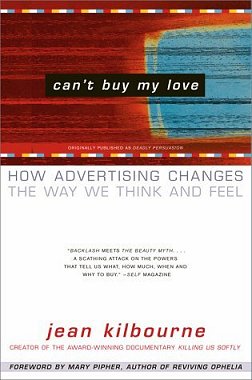
"They ask you concerning INTOXICANTS
(Alcohol and other Drugs)...Say: In them is great harm and some benefits for
humankind. But the harm of them is much greater than their benefit."(Koran
2:219)
Alcohol consumption in any amount leads to a physiological tendency to abuse it, based on its effect on the serotonin levels in the brain. Therefore, the idea of “responsible” drinking is itself irresponsible .

The Koran's call to completely shun alcohol and other intoxicants is justified because law has to be applied uniformly. For the law to be applied justly and uniformly, in order to benefit society as a whole, those who have a greater tendency to abuse alcohol shouldn't have access to the drug neither should those who have a lesser tendency to abuse it. Laws that are applied society-wide cannot discriminate between those with different tendencies to abuse a harmful substance.
However, for the purpose of rehabilitation, the Koran allows the use of alcohol based on its principle of dietary laws being flexible in order to save lives,“without willful transgression.”(Koran 2:174)
Alcohol is harmful on an individual and a social level:
1) 60-70% of all crime involves alcohol and/or other intoxicating drugs. Almost 50% of all violent crimes involve alcohol. Twenty-four percent of Federal inmates and 49% of State inmates reported that they were under the influence of alcohol or illicit drugs at the time of their current offense. 36.3% were under the influence of alcohol alone. Federal research also shows that more than 40% of convicted murderers being held in jail or State prison, had alcohol as a factor in their crime. Extensive data is available to show the relationship between violent crime and alcohol. In the United Kingdom, the British Medical Association, advised the Parliament that alcohol is a factor in: • 60-70% of homicides • 75% of stabbings • 70% of beatings • 50% of fights and domestic assaults. According to the Seventh Special Report to the U.S Congress on Alcohol and Health, "In both animal and human studies, alcohol more than any other drug, has been linked with a high incidence of violence and aggression."
Alcohol temporarily increases brain serotonin function, but after that temporary rise, levels of serotonin fall below the normal level. This reduced serotonin level is linked to a heightened vulnerability to depression, increased risk of violent suicide, aggressive and impulsive behavior, and a tendency to further abuse alcohol, according to the National Institute on Drug Abuse (NIDA). Alcohol consumption in any amount leads biologically (through serotonin) to a tendency to abuse it. There is no such thing as “responsible” drinking on a society-wide level.
"…Alcohol, the oldest and most prevalent cause of addiction, is by far the most prolific activator and deactivator of brain centers. Nothing else comes close. Not cocaine, not heroin, not nicotine…Using PET scanners, University of Chicago scientists studied the effects of alcohol on the brain. Since alcohol affects the pleasure centers of the brain (the limbic network in the mid brain), it is directly responsible for compulsion, addiction and craving." (Kotulak 1997:111)
"But to modern scientists, the discovery of alcohol's ability to turn on the brain's reward system is the key to understanding how alcohol creates a craving so intense that it makes emotion rule over reason. When a person slips into dependence, alcohol craving becomes a drive as powerful as the need for food, water, sleep and sex."(Kotulak 1997:116)
2) Nearly 50% of Automobile fatalities in the U.S. are linked to Alcohol (one death every 11 minutes according to 1990 estimates). Forty percent of all fatal motor vehicle crashes involve alcohol. Drunk driving is the nation's most frequently committed violent act. In 1990, 22,083 people died in car accidents involving alcohol. This is equivalent to three fully loaded 747s crashing three times a week, every week for a year. About two in every five Americans will be involved in an alcohol-related car crash sometimes in their lives. (http://www.geocities.com/Heartland/Plains/3121/statistics.html).
3) Fetal Alcohol Syndrome (FAS) results in mental and physical retardation of the newborn. The incidence of FAS in the United States is 1.9 cases per every 1000 births. Birth defects other than FAS linked to alcohol use are 1 in every 100 births. Statistically these numbers are huge. According to the World Health Organization (WHO), the net rates for FAS are 1 in 500 for US, Canada, Europe and Australia combined. In 1991, The Journal of the American Medical Association (JAMA) reported that FAS (Fetal Alcohol Syndrome) is the leading known cause of mental retardation in Western Civilization (see http://come-over.to/FAS)
4) As many as half the young offenders appearing in provincial court may be there because their mothers drank (alcohol) during pregnancy, says Royal University Hospital psychologist Josephine Nanson. (See, http://www.treefort.org/~tjk/fas/zakreski.htm).
5) Almost 78% of all assaults, most of them involving men beating women, are committed under the influence of alcohol. In the United States, a man beats a woman every 15 seconds. Two-thirds (75%) of partner abuse victims in the US report that alcohol had been a factor. For spouse abuse victims, the offender was drinking three out of four times (See, http://www.tf.org/alcohol/ariv/reviews/dvrev5.html)
6) Alcohol causes permanent damage to the brain, liver and most internal organs of the consumer. It is a poison, which the body tries to get rid of the moment it is consumed. An enzyme in the stomach, alcohol dehydrogenase, tries to neutralize the ethanol content in alcoholic beverages, treating it as a poison. Since women have a higher proportion of body fat and less water in their bodies, this means that alcohol will be less diluted and have a greater effect on them compared to men. Also, the enzyme in the stomach that neutralizes ethanol, alcohol dehydrogenase, in women is 70-80% less effective than it is in men. Alcohol, therefore, causes even greater harm to women. In women that drink heavily, cirrhosis of the liver sets in within 13 years compared to the 22 years for men (see http://www.alcohol.or/nz).
7) Alcohol acts as a "stepping-stone" for other "higher" drugs like Marijuana, Cocaine and Heroine. Those who don't do alcohol don't experiment with other drugs (Siegel, Sienna 1994). This is in contrast to “stimulants” like caffeine, which don't figure out in this “stepping stone”.

